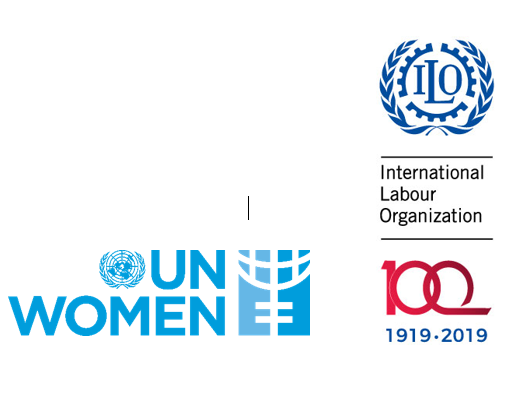Everyone has the right to live and work free from violence and harassment. In spite of this, violence and harassment against women in the world of work is present in all jobs, occupations and sectors of the economy in all countries across the world. Some women are disproportionately affected by violence and harassment because of their employment status, the type of work they carry out, or because of the conditions in the sector that they work in.
There are many emerging good practices to prevent and respond to violence and harassment against women, coming from international organizations, governments, employers, trade unions and non-governmental organizations (NGOs), amongst others.[1] The United Nations Framework to Underpin Action to Prevent Violence against Women has highlighted the workplace as an important entry point for addressing this issue across the economy and society (UN Women, 2015a, p.41). However, systematic documentation of these policies and practices is scarce. This handbook aims to address this gap.
The publication of this joint UN Women-ILO Handbook coincides with the unprecedented mobilization of millions of women, behind #MeToo and other movements, in a global response to sexual harassment and sexual assault in the world of work. Moreover, this handbook is being published within the context of the International Labour Organization (ILO) standard-setting process which is working towards a new international standard or standards on ending violence and harassment in the world of work. With the final discussion and the possible adoption of an international Convention, Recommendation or both, scheduled for the ILO’s International Labour Conference in 2019, this process follows many years of work by governments, employers’ and workers’ organizations.
What do we know about violence and harassment in the world of work?
- “Violence against women – particularly intimate partner violence and sexual violence – is a major public health problem and a violation of women's human rights.” (WHO, 2017)
- Taking into account that definitions vary, estimates from available country surveys show that as many as 75 per cent of the world’s women aged 18 years and over, or at least 2 billion women, have experienced sexual harassment (Chamie, 2018).
- Between 45 and 55 per cent of women surveyed across the 28 European Union (EU) States have experienced sexual harassment since the age of 15. It is estimated that up to 75 per cent of women in a professional capacity or in top management jobs have experienced sexual harassment in their lifetime (FRA, 2014).
Violence and harassment against women in the world of work is a serious violation of women’s human rights and a major barrier to achieving equality of opportunity and access to decent and dignified work (ILO, 2016e, para 1). It has a devastating impact on women workers’ health, wellbeing and performance at work. It is also deeply connected to social norms, values and stereotypes that foster gender inequalities, discrimination against women and unequal power relations between men and women, including intersecting forms of discrimination, for example, based on gender and race, disability or social origin.
“Regardless of income level or social status, violence affects women and girls of all ages and impacts their full and equal participation in society and the economy. Violence takes many forms, including not only physical, but also sexual, emotional, and economic, as well as harassment experienced in public and in places of work and education. Beyond the individual harm inflicted on women and their families, gender-based violence is a global problem with substantial economic costs.” (Tavares and Wodon, 2018, p.1)
The World Health Organization (WHO) estimates that 1 in 3 women have experienced some form of physical and or sexual violence in her lifetime (WHO, 2017). This statistic does not include sexual harassment, where numbers would be higher. Despite its high prevalence, violence and harassment remains largely unreported, with many victims, bystanders and witnesses afraid or reluctant to come forward or unsure about how to do so. Where victims do complain, many face ineffective systems or procedures, experience retaliatory action, or further violence and harassment, or lose their jobs. Furthermore, contract clauses on forced arbitration or coercive confidential agreements (“gag orders”) may prevent some victims from sharing their experience, adding to the psychological distress they may be feeling and keeping the problem in the shadows. Social norms blaming the victim or stigmatizing women speaking out about gender inequalities also perpetuate the silence around violence and harassment. As a result, changing social norms and behaviour in the workplace is crucial to preventing violence and harassment against women in the world of work and in society more broadly. For example, when practical workplace policies and procedures are in place, world of work actors begin to understand what constitutes acceptable and unacceptable behaviour at work and are an important starting point for changing organizational culture that values and respects women and men equally.
It is encouraging that women around the world are saying that “time is up”, and are standing up and speaking out about their experiences of sexual harassment and other forms of gender-based violence and harassment. For gender-based forms of violence and harassment against women to be systematically tackled, legal, policy and other practical measures are needed to promote women’s equal and effective representation in the workplace and to give women voice and agency in raising their concerns. Perpetrators of violence and harassment must also be held accountable, and there must be an end to impunity.
Governments, employers and workers and their organizations, and civil society have a part to play in transforming the world of work. Practical workplace strategies and policies are an essential tool to promote this transformation, as is ensuring that employers’ and workers’ representatives have the skills and knowledge to help implement a gender-responsive approach to preventing and ending violence and harassment.
[1] The inclusion of any name of a company, other organization or individual and/or specific examples of polices, practices or initiatives does not constitute an endorsement of such entities, persons or examples by the ILO or UN Women.
